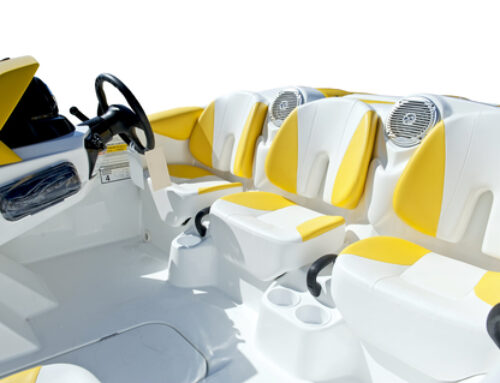Finding vintage fabric
Compiled by Juli Case
Question: A customer brought in a boat from the early 1990s that needs fabric repair on one of the seats. He requested the original fabric, which I don’t think is available anymore. Where can I get “old” boat fabric?
Answer: When a customer brings in an older boat with original materials, the best tactic is to contact the boat manufacturer. Manufacturers may have stock material on hand that they sell for repair work, although the older the boat, the harder it is to find. Some boat manufacturers have fabric made especially for them, which means when it’s gone, it’s gone. If the manufacturer is willing to tell you who made it for them, it may be possible to have a special run of the material done. If the fabric you’re looking for is five years old or older, don’t be surprised if the boat manufacturer no longer has access to the information.
Hearing that the fabric is no longer available won’t satisfy your customer, so we asked members of the Marine Fabricators Association for advice. Many indicated that the first step is to educate the customer. Colors and fabric choices don’t change as much or as often for boats as they do for clothing, but there are trends, and your customer probably hasn’t thought of it that way. Explain the situation and have a reasonable alternative. Several marine shops explained that even if you found the original fabric, it probably wouldn’t match. Dye lots vary, and marine fabrics change color due to exposure to the elements. And after years of wear, the texture may have changed.
Another tactic is to replace part of the fabric, updating the look while keeping the feel of the original. Complete the repair in a contrasting fabric or a fabric with a texture that picks up the original color. One fabricator said she tries to spread the replacement material around so all of the cushions look even. If she’s patching a corner and the material doesn’t precisely match, she’ll do the corner on the other side so the repaired cushion looks balanced. Several fabricators suggested using a contrasting fabric for the repair, so the result looks two-toned. If you replace the cushion fabric, salvage what you can to make throw pillows to maintain the feeling of the original material.
Another manufacturer indicated that it’s important to know why your customer is requesting a match to the original fabric. If the customer wants the same fabric as the original because of the durability of the original fabric or because he likes the color or texture of it, then direct him to current fabrics with similar characteristics.
Most fabricators know from experience that finding a 20-year-old fabric isn’t likely to happen. One shop said that they try to match the color as closely as they can, but also suggest that the customer do Internet searches or contact the manufacturer. In most cases, the customer comes back willing to accept the replacement option.
If none of these suggestions work, think outside the box. You can sometimes find fabric for sale on Internet auction sites, like eBay. If the boat is a show boat, there may be a club or association for it. Some of the members of these clubs may have suggestions or may even have some fabric. Lastly, one fabricator suggested taking the sample to a local fabric graphics business. It’s possible that they could custom-match the color using a print technique, although this would only be practical for very small jobs.
In the end, the customer has to live with the end result, so it pays to do whatever you can to keep them happy. If you’re unable to find the original fabric, it’s a good idea to let them know the time and effort you put forth to try and locate it for them.
 TEXTILES.ORG
TEXTILES.ORG 






